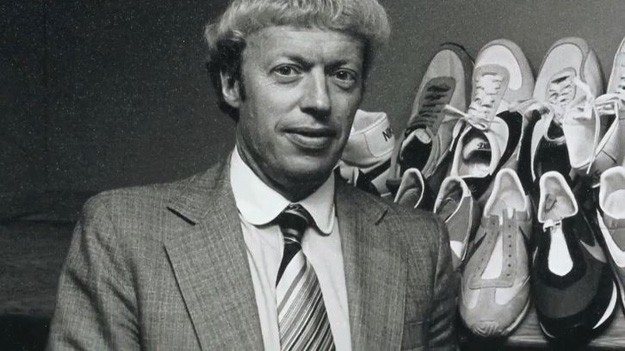Phil Knight: How did a young man studying journalism become a sneaker emperor?
Nike was founded in 1964 as Blue Ribbon Sports and began working as a distributor for Japanese shoe manufacturer Onitsuka Tiger (also known as Asics). It was officially renamed Nike in 1971.

Phil Knight was born on February 24, 1938. He graduated from the University of Oregon in 1959 with a degree in journalism. During his education, he sweated in the running team of the university. After spending a year as a soldier in the US Army, he returned to school to complete his MBA from Stanford University.
Nike co-founder Bill Bowerman. Nike's first pair of running shoes was inspired by waffles. Nike co-founder Bill Bowerman was having breakfast with his wife one morning in 1971 when it dawned on him that the grooves in the waffle iron she was using would be an excellent mold for a running shoe.
BRS' strategy was simple: to import Japanese sneakers called the Onitsuka Tiger and sell them at higher prices in the United States. When Bowerman created his own design on the rubber-knurled sole, which later became the brand's signature, in 1971, the shoes they produced in the Asian market were much cheaper than their competitors, such as Adidas, which exported from Germany.
When the company changed its name to Nike in 1971, many well-known athletes were wearing their shoes, helping to double annual profits. Knight and bowerman's connections with runners and their focus on producing high-quality products have made Nike the number one choice for professional athletes.
Nike's logo was designed by Portland State University student Carolyn Davidson for $35. Later, this student was gifted a company share worth $640,000.
The company launched the Nike Cortez simultaneously with the 1972 Munich Olympics. Knight has made these shoes the number one choice for Olympic athletes. The Cortez model was available in many different colors and was the first model Nike introduced today's well-known "swoosh" logo. Thus, these shoes became one of the first sneakers that appealed to fashion as well as functional.
The slogan "Just Do It" was inspired by serial killer Gary Gilmore, who said "Let's Do It" before he was executed in 1977. The first “Just Do It” campaign was launched in 1988. In the commercials, 80-year-old running icon Walt Stack was running on the Golden Gate Bridge.
Nike achieved a rapid growth momentum in the 70s and 80s. Its revenue, which was $28.7 million in 1973, reached $867 million in 1983.
The company launched the Air Force 1 model in 1982, which you can see everywhere today. There was an air sac in the heel of the shoe, which provided extra stretch and support for basketball players. This model was the shoe in which Nike Air was used for the first time. This model has become one of the most popular sneaker models ever, and still millions of units are sold each year.
Modern Air Force 1
One of Knight's greatest achievements was signing a sponsorship deal with Michael Jordan and creating the Air Jordan, now the most successful sneaker line of all time. In 1985, when he was a star college basketball player making his way to the NBA, Nike signed a five-year deal with Michael Jordan for $500,000 a year, a figure unheard of until then.
Air Jordans went on sale for $65 in March of 1985, and by May the company had sold $70 million worth of Air Jordan shoes. By the end of the year, this shoe had generated more than $100 million in revenue.
But as Nike's sales began to decline in the mid-1980s, Knight realized that a major shift was needed in the company's thinking. He later realized that although Nike was marketing its products to top athletes, the vast majority of its customers were ordinary citizens who did not even use the shoes for sports.
The famous entrepreneur transformed Nike from a product-focused company into a marketing-focused one. It began to appeal to ordinary customers. So it eventually increased sales again. By the end of 1991, it had regained its position, bringing its sales to a total of over $3 billion. Knight said in an interview for the Harvard Business Review in 1992: “The most important thing we do is market the product.” “Marketing holds the company together. The design elements and functional features found in the product itself are only part of the marketing process.”
Knight's marketing genius stemmed from the fact that he did not focus on selling shoes, he always wanted more. At an industry conference in the mid-1970s, he highlighted an important difference in his marketing scheme: He said he was in the entertainment business, not the footwear business.
In the '90s, Nike faced another obstacle: Rumors began to spread that the company was using inappropriate workforce practices. Afterwards, customers started boycotting the brand, staging protests in front of the stores; this led to a hatred of Nike that would last for almost a decade.
Sales fell so low that by 1998 Nike had to downsize by laying off employees. Knight, who was the CEO of the company at that time, stepped in once again and made major changes in order to save the brand. By accepting the nasty rumor about the company, he increased the minimum wage he paid to workers, fixed the flaws in labor practices, and ensured factories were filled with clean air. The general opinion about the brand began to change, and Nike was once again set its sights on the top.
